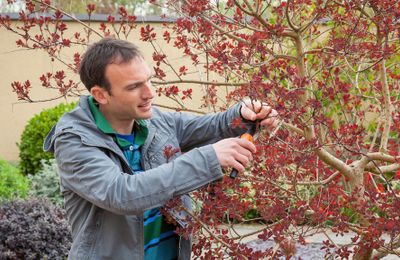[ad_1]
It’s easy to rush to the diy store or garden centre and buy the first tool you see, but well-designed tools make an enormous difference to how well they work, how long they last and how easy they are to use.
The Which? Gardening experts explain how to buy the best tools that will do the job well and last for many years so they’re better for your pocket and the environment.
Check out our garden equipment guides
Make more of your garden – get our free Gardening newsletter for top tips from our experts
Spade
Even ‘no dig’ gardeners find a spade a useful tool as it’s perfect for digging planting holes for larger plants, such as shrubs, and for moving and spreading mulch. Traditional gardeners use their spade to turn the soil and incorporate soil improver.
When looking for a spade, check that the length suits your height. To do this, hold the spade as you would if you were about to push it into the ground. The handle height is right for you if you’re leaning over it slightly. Also get a feel for how heavy it is as a heavier spade can be tiring to use for long periods. Check how smooth the handle feels as rough surfaces can irritate your hands and consider whether a wooden or plastic handle would suit you best.
Check out our Best Buy spades
Garden fork
Forks are great for preparing beds for planting, as well as harvesting root veg and digging out perennials and shrubs, and they’re especially useful for gardens with heavy clay or compacted soil. Just like spades, it’s important to get a handle length that’s comfortable for your height. Buying a decent one is important as poor-quality ones often get bent during use.
See our Best Buy garden forks
Secateurs
Essential for pruning, secateurs are a tool that can last a lifetime, especially if you choose a brand that offers servicing and parts replacement. A well-designed pair will have sharp blades and comfortable handles that allow you to keep continually pruning without getting a painful hand. Check that the size feels comfortable in your hand and if you’re left-handed, look for a model designed specifically for your needs. Try opening and shutting the blades with the catch to see if this feels comfortable and doesn’t hurt your hands. Sometimes catches are in awkward positions that makes them a pain to use.
Try our Best Buy secateurs
Garden gloves
This one may be a more controversial inclusion in the list as some prefer to go glove-free. However, gloves make handling prickly and stingy plants much more comfortable. They also protect your skin from the drying effects of handling soil and stop ingrained dirt in your fingers and nails.
The most obvious thing to check is that the gloves are the right size for your hands. They’re usually sold in different sizes so take the time to measure your hands and get the right ones for you. It’s a good idea to try them on and check if there are uncomfortable seams or if it feels like you wouldn’t be able to feel what you’re doing. Lightweight gloves are best for more dextrous tasks, such as sowing seeds, while tough gloves are great for keeping out thorns while pruning. Some gloves handle damp conditions better than others and it’s a matter of personal choice whether you like longer gauntlet-style gloves or not.
Learn which are our Best Buy garden gloves
Other tools
Depending on the size of your garden and your interests, there are other tools which may be useful to you:
[ad_2]
Source link

Leave a Reply